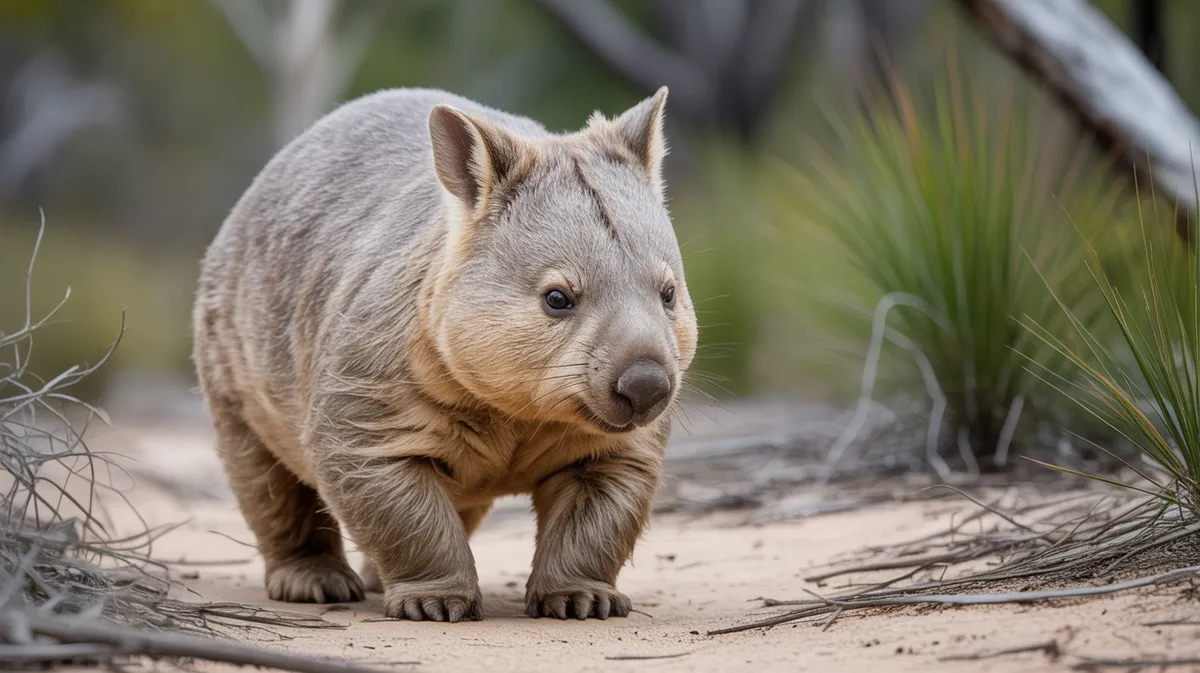
Northern Hairy-nosed Wombat
Lasiorhinus krefftii
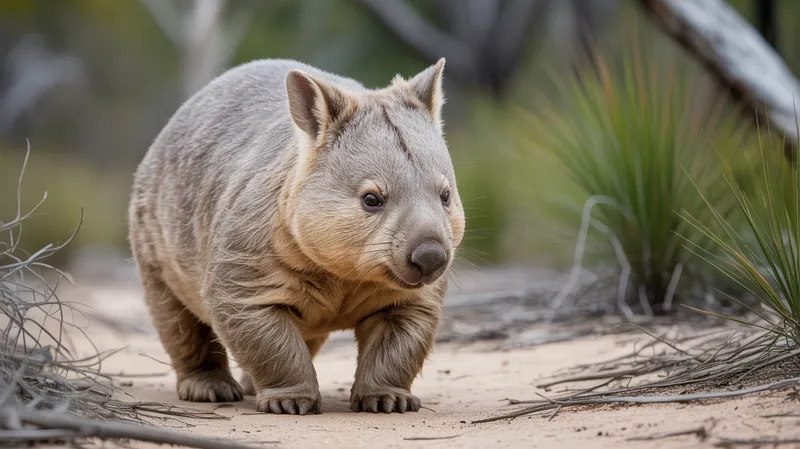
Meet the Northern Hairy-nosed Wombat
The Northern Hairy-nosed Wombat is one of the world's rarest large mammals, known for its distinctive soft, silky fur and prominent hairy muzzle. This burrowing marsupial is robust and powerful, capable of digging extensive tunnel systems in sandy soils. Once widespread across eastern Australia, it is now restricted to a single protected population in Epping Forest National Park, Queensland. The species is highly nocturnal and elusive, making direct observation in the wild extremely rare.
Classification
Mammal
Habitat
Eucalypt woodland and open grassland with sandy soils
Diet
Herbivore
Lifespan
15-20 years
Conservation
Critically Endangered
Weight
25-40 kg
📖Fascinating Facts
Master Burrowers
Northern Hairy-nosed Wombats dig extensive burrow systems that can be up to 3 meters deep and 90 meters long, providing them safety and stable microclimates.
Strict Herbivores
Their diet mainly consists of native grasses such as spear grass and tussock grass, which they eat at night to avoid the harsh daytime heat.
Marsupial Relatives
As marsupials, female wombats have a backward-facing pouch where their young, called joeys, develop after birth.
📋Detailed Description
The Northern Hairy-nosed Wombat (Lasiorhinus krefftii) is a robust, burrowing marsupial distinguished by its broad, flattened head, large forward-facing ears, and a distinctive muzzle covered with fine, sensitive whiskers. Adults typically weigh between 32 and 40 kilograms and measure 90 to 105 centimeters in length, making them the largest of all wombat species. Their fur is soft, dense, and grey-brown, providing insulation against both heat and cold. The species possesses powerful forelimbs equipped with strong claws, specialized for digging extensive burrow systems that can reach up to 30 meters in length and 3.5 meters in depth. The wombat's incisors grow continuously, an adaptation for grazing tough native grasses. Its pouch opens backwards, protecting the young from soil while digging. Northern Hairy-nosed Wombats are primarily nocturnal, emerging from their burrows at dusk to feed and returning before dawn. They have acute olfactory and auditory senses, compensating for relatively poor eyesight. The species is solitary, with individuals maintaining exclusive burrow systems, though several wombats may share a warren with multiple entrances. Their low metabolic rate and efficient digestive system enable them to survive on nutrient-poor grasses and conserve water in the arid environments they inhabit.
💡 Did you know?
Fewer than 350 Northern Hairy-nosed Wombats remain in the wild, making them one of the rarest mammals on Earth.
🔬Research & Sources
Wikipedia Summary
The northern hairy-nosed wombat or yaminon is one of three extant species of Australian marsupials known as wombats. It is one of the rarest land mammals in the world and is critically endangered. Its historical range previously extended across New South Wales, Victoria, and Queensland, and as recently as 100 years ago it was considered as having become extinct, but in the 1930s a population of about 30 individuals was discovered located in one place, a 3 km2 (1.2 sq mi) range within the 32 km2 (12 sq mi) Epping Forest National Park in Queensland. With the species threatened by wild dogs, the Queensland Government built a 20-kilometre (12 mi)-long predator-proof fence around all wombat habitat at Epping Forest National Park in 2002. Insurance populations have since been translocated to two other locations to ensure the species survives threats such as fire, flood, or disease.
Last Modified: 4/16/2025
🎭Behavior & Social Structure
Northern Hairy-nosed Wombats are strictly nocturnal, spending daylight hours in their cool, humid burrows to avoid heat stress and dehydration. At night, they emerge to graze on native grasses, particularly favoring species such as Dichanthium sericeum (Queensland bluegrass) and Aristida spp. Feeding bouts are interspersed with periods of rest and vigilance. Wombats are generally solitary, exhibiting strong territoriality around their burrow entrances, which they mark with scent glands. Social interactions are limited, though burrow sharing occurs, especially among females and juveniles. Communication is primarily olfactory, with scent marking and dung piles used to convey presence and reproductive status. Aggressive encounters are rare but may involve vocalizations, chases, or physical confrontation, particularly between males during the breeding season. Daily routines are dictated by environmental conditions, with activity patterns shifting in response to temperature, rainfall, and food availability.
👶Reproduction & Life Cycle
Breeding in Northern Hairy-nosed Wombats is seasonal, typically peaking during the wet season (November to April), when food is most abundant. Females reach sexual maturity at approximately 3 years of age, while males mature slightly later. After a brief courtship involving scent marking and following, mating occurs within or near the burrow. Gestation lasts about 21 days, after which a single, underdeveloped joey is born and immediately crawls into the mother's backward-facing pouch. The joey remains in the pouch for 8 to 9 months, followed by a period of burrow-bound dependency lasting several more months. Weaning occurs at around 12 to 15 months of age. Females typically breed only once every two years, resulting in a very slow population growth rate. Parental care is provided solely by the mother, who is highly protective of her young.
🛡️Adaptations & Survival
The Northern Hairy-nosed Wombat exhibits several unique adaptations for survival in arid, sandy environments. Its powerful forelimbs and large claws are specialized for excavating deep, complex burrow systems that provide stable microclimates and protection from predators and extreme weather. The backward-opening pouch prevents soil from entering while digging. Their low metabolic rate and highly efficient digestive tract, including an enlarged cecum, allow them to extract maximum nutrients and moisture from fibrous, low-protein grasses. They can survive for extended periods without free water, relying on metabolic water and moisture from their food. Sensitive vibrissae (whiskers) aid in navigation and foraging at night. Behavioral adaptations include strict nocturnality and seasonal shifts in activity to coincide with optimal environmental conditions.
📚Research Sources
🎨Cultural Significance
The Northern Hairy-nosed Wombat holds cultural significance for Indigenous Australian groups, who refer to it as 'yaminon' and recognize it as part of their traditional ecological knowledge. While not as prominent in folklore as some other marsupials, the species is a symbol of conservation efforts in Australia and features in educational campaigns and wildlife advocacy. Its rarity and unique biology have made it an emblematic species for habitat protection and endangered species recovery programs.
🔬Recent Research & Discoveries
Recent research has focused on genetic diversity, population monitoring using non-invasive DNA sampling from hair and feces, and the development of insurance populations through translocation to predator-proof reserves such as Richard Underwood Nature Refuge and St. George. Studies have also examined the species' dietary preferences, reproductive biology, and burrow microclimate to inform management. Advances in remote camera trapping and environmental DNA (eDNA) analysis have improved monitoring accuracy. Ongoing research aims to enhance genetic diversity through managed breeding and to identify suitable sites for further population expansion.
🎥Wildlife Videos
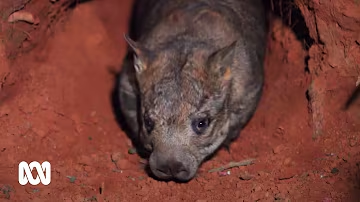
Saving the Northern Hairy Nosed Wombat - one of the world's most endangered species | ABC Australia
Conservationists in central Queensland are using radar technology to map the burrows of one of the world's most endangered ...
ABC Australia

Northern Hairy-nosed Wombat Joey
In order to establish a second population of the northern hairy-nosed wombat, a site for the reintroduction had to be found. Several ...
Queensland Environment

Wonders from Down Under: Northern Hairy-Nosed Wombat #endangeredspecies #wombats
simonj3413 @quintinscreaturecorner899 @_ethanol_ @spencerstark6420 @disneyvillainrocket1.
Thomas Huffman (AlphalionSimba)
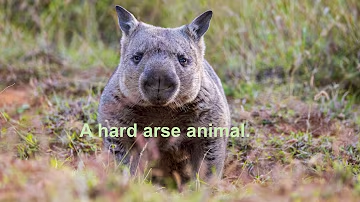
The Northern hairy-nosed wombat is a real hard arse.
Just a few facts and footage of the northern hairy-nosed wombat. These animals have been saved from extinction and the ...
Wildlife Moments Australia

From 35 to 400: The Miraculous Comeback of the Northern Hairy-Nosed Wombat 🦡💚
From 35 to 400: The Miraculous Comeback of the Northern Hairy-Nosed Wombat This is the unbelievable true story of the ...
Safety Horizon
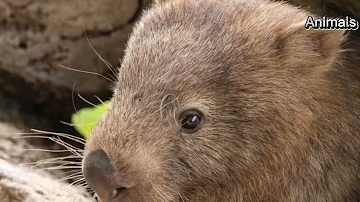
Meet the Rare Northern Hairy-Nosed Wombat!
Discover the fascinating world of Northern Hairy-Nosed Wombats, one of Australia's most elusive and endangered species.
Rare Animals
🌍Habitat Information
The Northern Hairy-nosed Wombat typically inhabits Eucalypt woodland and open grassland with sandy soils environments. Northern Hairy-nosed Wombats have adapted to their environments with specialized features and behaviors.
Primary Habitat:
Eucalypt woodland and open grassland with sandy soils
More detailed habitat information will be available soon.
🛡️Conservation Status
The Northern Hairy-nosed Wombat is currently classified as Critically Endangered. Conservation efforts are crucial for preserving this species for future generations.
Common Threats:
- 🏠Habitat loss and fragmentation
- 🌡️Climate change impacts
- 🎯Hunting and poaching
- 🏭Human-wildlife conflict
⚠️Threats & Conservation Challenges
The primary threats to the Northern Hairy-nosed Wombat include habitat loss and fragmentation, predation by introduced species (particularly wild dogs and dingoes), competition with cattle and rabbits for food, disease, and the risks posed by small population size such as inbreeding and reduced genetic diversity. Catastrophic events like fire, flood, or disease outbreak could devastate the remaining populations. Conservation challenges include maintaining genetic diversity, managing habitat quality, and mitigating the impacts of climate change, which may alter grassland composition and water availability. Despite intensive management, the species remains critically endangered, with fewer than 300 individuals estimated in the wild as of 2023. Ongoing threats require constant monitoring and adaptive management strategies.
🔬Scientific Classification
Scientific Name
Lasiorhinus krefftii
Classification Hierarchy
🔍 About Taxonomic Classification
Taxonomic classification is a hierarchical system used by scientists to classify and organize living organisms based on shared characteristics and evolutionary relationships.
The system moves from broad categories (Kingdom) to increasingly specific ones, with each animal's scientific name typically consisting of its Genus and species.
📝Community Notes
Share your observations and insights about the Northern Hairy-nosed Wombat with our community of wildlife enthusiasts.
Join Our Community
Sign in to share your observations and connect with fellow wildlife enthusiasts.
Sign In to ContributeNo community notes yet
Be the first to share your observations about the Northern Hairy-nosed Wombat!
Explore Northern Hairy-nosed Wombat
Select a tab above to learn more about this amazing animal.
📸Photo Gallery
No photos available for this animal yet.
🌟Discover More Wildlife
Continue your journey of discovery with more fascinating animals from our database
